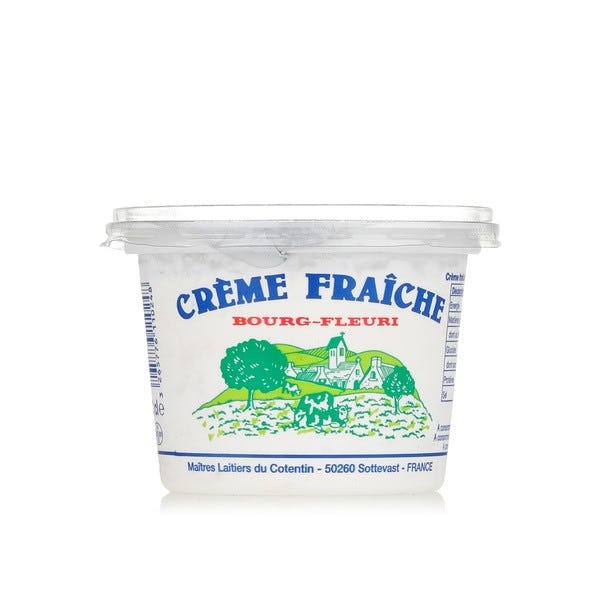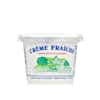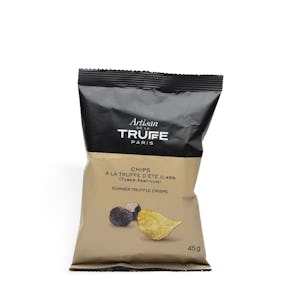




Bourg-Fleuri Crème Fraîche MLC
Tasting Notes from the Curator
Crème Fraîche is quite different from sour cream. While there are tangy, sour notes to crème fraîche, it is far less pronounced than sour cream. Crème fraîche is also made with milk that has a higher fat content, resulting in a far creamier, thicker product, compared to sour cream, which is far more acidic due to the lactic-acid producing bacteria that is added to it. The culture used in crème fraîche is a mixture of Lactococcus species L. cremoris, L. lactis, and L. lactis biovar diacetylactis. The result is a tangy creamy product, but far less so than sour cream. It also has a distinct nuttiness to it that is absent from sour cream.
Preparations
Crème fraîche is most commonly used as a substitute for sour cream (or vice versa). There are few problems that this can cause, especially if you are substituting the former for the latter. As crème fraîche is far more subtle than sour cream, you may notice that the sourness you were expecting might be absent. On the other side of the coin, if you’re substituting sour cream for crème fraîche - especially in sauces and soups - you will notice the sour cream will curdle due to the high lactic acid content of the product. Each has its own place and uses.
Some of our favourite ways to use crème fraîche:
- To prepare creamy sauce for chicken or veal. Once your meat is cooked, deglaze your pan with a generous amount of Crème fraîche. Bonus tip: before deglazing, add some freshly crushed pepper and flambé with some Cognac or some Brandy, wait a couple of minutes, and add the crème. Or you can fresh mushrooms, garlic and parsley before deglazing.
- Or creamy fish dishes, like a Normande Sole or some creamy Scallops.
- With duck, in a cream and cider sauce.
- With mussels, in a creamy white wine sauce.
- On top of warm blinis as a cushion for caviar or smoked salmon. If you use smoked salmon, sprinkle a few drops of lemon juice and some dill!
- With strawberries: Cut your strawberries, add some lemon juice, mint and lemon and let them rest in the fridge for 30 mins. Plate on a dollop of Crème Fraiche. Paradise.
- Inside an omelette, with chive.
Accidental discovery
Crème fraîche was originally created in France, when a dairy farmer left their unpasteurized milk out in the summer sun. The natural bacteria in the environment and in the milk itself caused the milk to slightly thicken and sour. These were the humble beginnings of crème fraîche and the fame that it enjoys to this very day.
Storage Instructions
To store crème fraiche, place it in an airtight container and keep it in the refrigerator. It will last for about 1 month in the fridge if unopened, or 3 to 4 days after opening. To extend its shelf life, you can freeze crème fraiche in its original packaging, in a freezer bag or airtight container, or even as ice cubes in an ice cube tray. However, keep in mind that crème fraiche may separate when thawed and will require whisking to restore its consistency. It is best to use frozen crème fraiche within 3 to 4 months for the best flavor and quality. To thaw frozen crème fraiche, transfer it to the refrigerator overnight and whisk it well before using.




